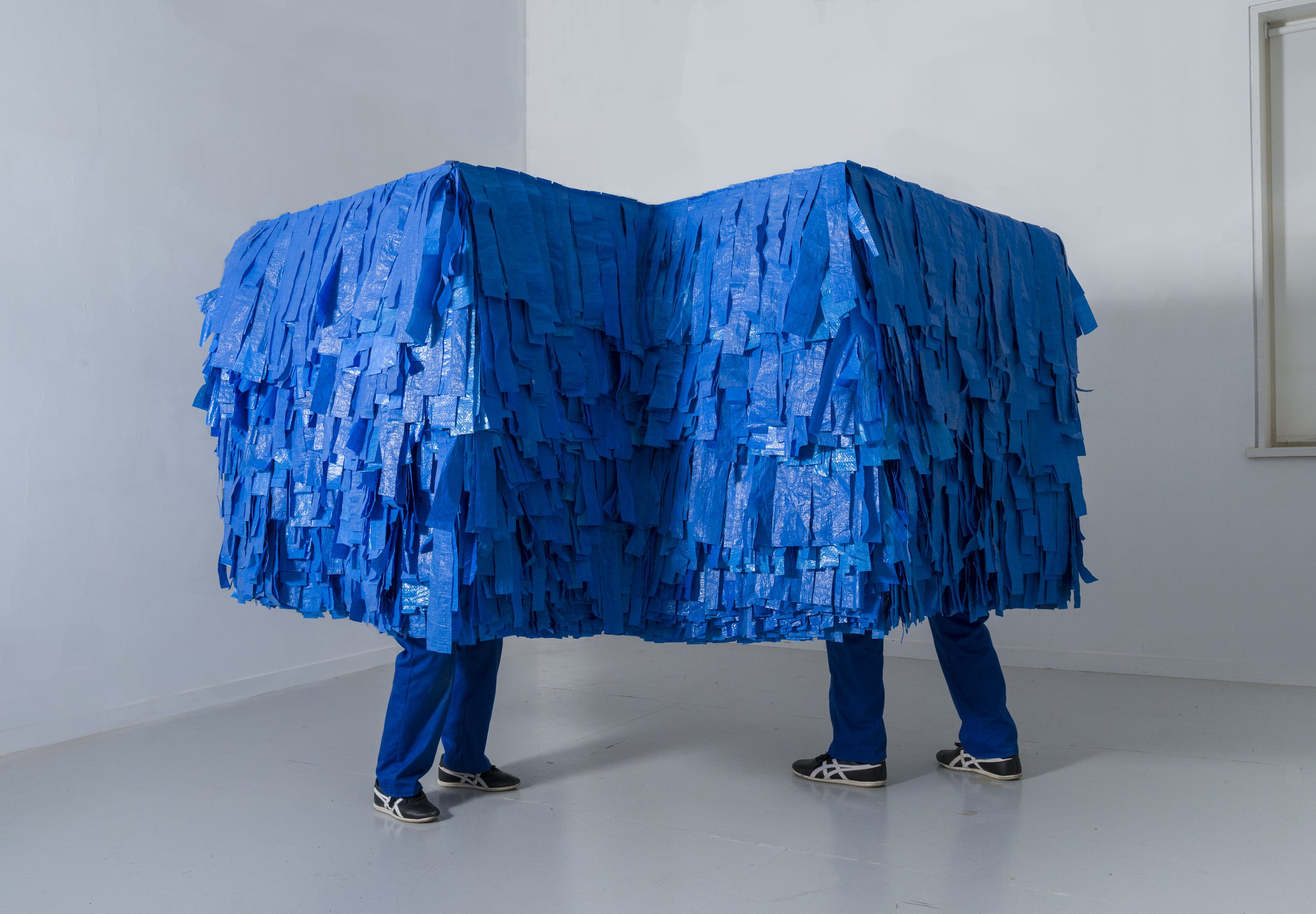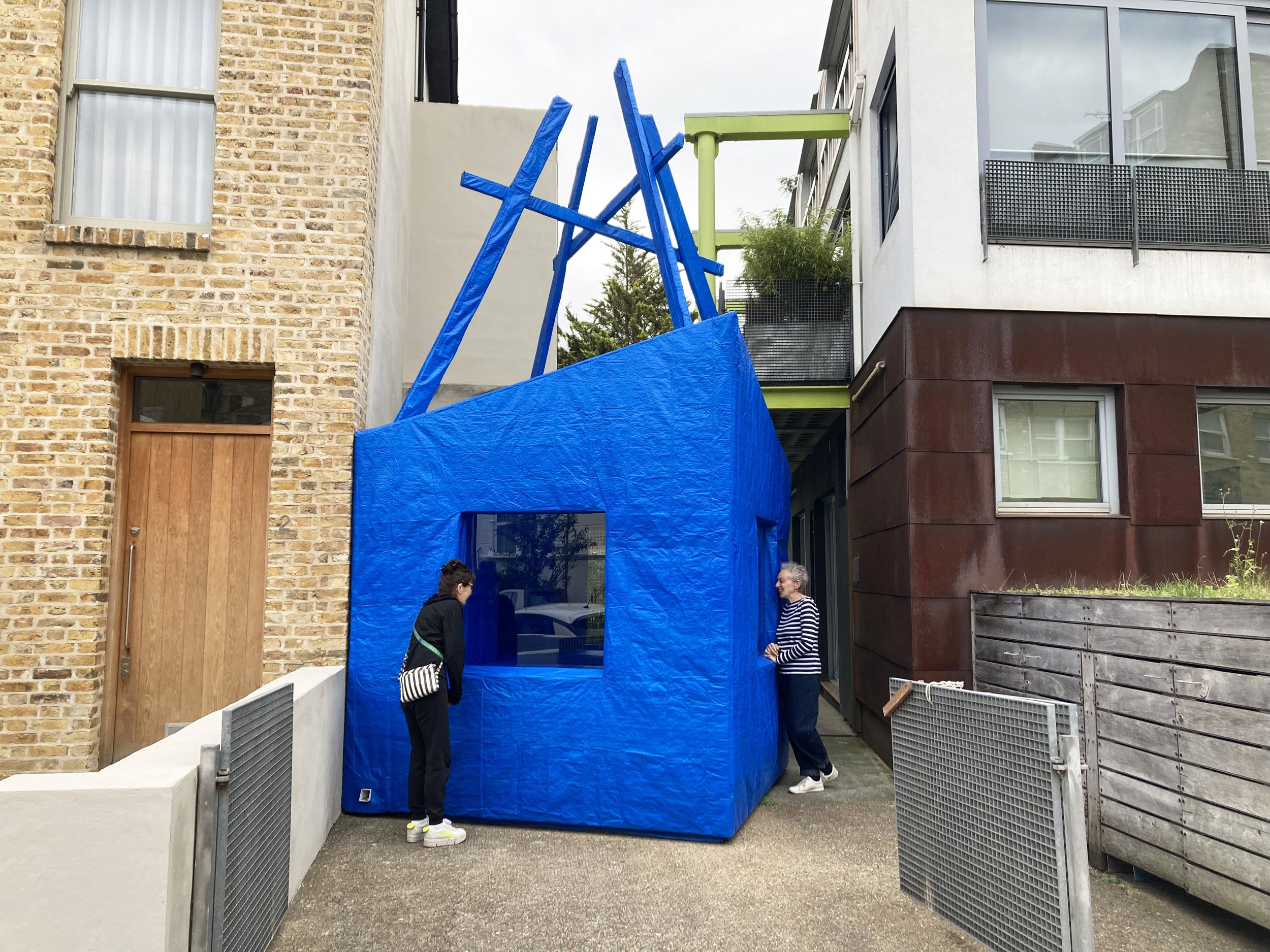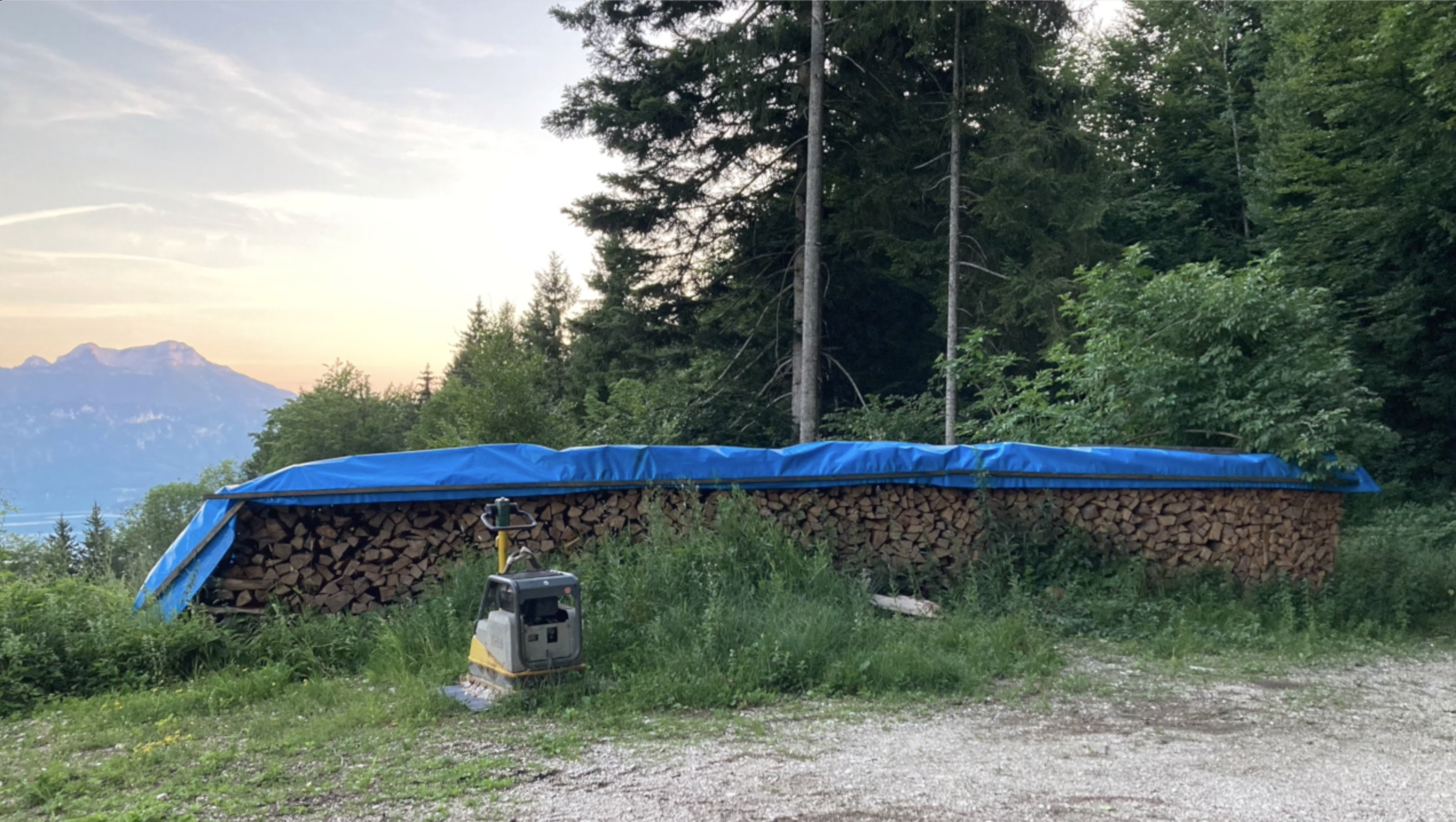Dunhill and O’Brien
HIDE
First invented in 1936 polyethylene is an oil-based material. Tarpaulins made of woven polyethylene went into production in the 1970s and are now used on a global scale, with blue tarpaulin as the most lightweight and ubiquitous.
This vivid blue material that so frequently punctuates human habitations has become almost invisible. While providing covering and protecting objects, it hides them in plain sight while creating new and intriguing forms. It is the go-to material for keeping farming equipment dry; providing improvised shelter for post-disaster situations; covering stacks of logs, boats, and freshly made tombs; smothering weeds on allotments; keeping the possessions of homeless people dry; protecting sculpture packing cases in leaking storage units and weather-proofing random items transported on pick-up trucks.
As an architectural object the m2 pavilion hovers between the private and public space of what could otherwise be a driveway. This unique and somewhat eccentric art space will temporarily take a rest from presenting artworks in its vitrine windows for the duration of Dunhill and O’Brien’s exhibition. Instead, a tailor-made blue tarpaulin jacket will cover all of its external and internal surfaces. Meanwhile, images from their blue tarpaulin photographic collection will be shown in the m2 window gallery.
The afterlife of this project will see the tarpaulin jacket packed and taken as luggage for a residency in Tokyo where it may be erected, to form a marquee-like hide, before being converted by thermochemical decomposition back to oil.
Dunhill and O’Brien have been working collaboratively since 1998 following what was intended to be a one-off project. Some years on and they continue to explore the dilemmas and possibilities of collaboration.
Their work is guided by a preoccupation with materiality, process and the troubling logistics of sculpture. Meanwhile a longstanding quest to find a way to bypass their individual taste has seen them working with elaborate strategies, kinetic apparatus, performative actions and at times the input of teams of participants. Research has involved visiting 19th Century Fuji like mounds in Tokyo, advertising as artists who dig holes for free in Holland, excursions to visit ‘celebrity’ rocks and stones around the UK and interviewing dentists, boulderers, bakers and others who employ tactile knowledge.
Based in London their projects include solo shows at PostRoom, London; the White Conduit Projects, London; Kunstvereniging Diepenheim, Netherlands and AirSpace Gallery (British Ceramic Biennial), Stoke on Trent. They have featured in group shows at Tallinn Art Hall, Estonia; The Estorick Collection, London; Danielle Arnaud Gallery, London and the Setouchi Triennale, Japan. Most recently they have shown at Das Weisse Haus, Vienna alongside Latvian artist Kristaps Ancans, in a two artist exhibition, Reverse Homesickness, curated by Corina L Apostol. Residencies include the British School at Rome, Youkobo Art Space, Tokyo and the European Ceramic Work Centre. They have benefitted from awards from the Arts Council England, the Arts & Humanities Research Council, Daiwa Anglo Japanese Foundation and the Great Britain Sasakawa Foundation among others.
Mark Dunhill and Tamiko O’Brien have both worked in Higher Education as lecturers and in senior academic positions: Dunhill at Central Saint Martins (UAL) and O’Brien at University of the Arts London and City & Guilds of London Art School.
http://www.dunhillandobrien.co.uk/



